- 20
- 48
The only cool thing that actually attracts non codecels is when you make and play with anything graphical because ppl like to consoooom the video media
I added Xorg trackpad gestures to KDE Plasma (gonna send PR soon here). The only gesture I didnt show off was the pinch and overview ones, just the Virtual desktop switching for now

Codecel out
I wont lie I did this because Wayland is fricking broken but I'm using a Soybook 2012 and anything that's not a Thinkpad is unusable once you learn about Trackpad gestures seriously they are very useful i love them i love my soypad gestures
- Ubie : h/cyberspace
- TheRInWreathStandsForRoxy : arrangements
- TedKaczynski : BIAST
- 40
- 134
- 9
- 27
- 28
- 75
— Elon Musk (@elonmusk) November 2, 2022
- 2
- 9
Too bad they block the rdrama.cc instance.
Orange Site:
https://news.ycombinator.com/item?id=33433053

@nekobit discuss
- 3
- 13
Orange Site:
- 5
- 17
More purchase history: https://archive.ph/https://www.amazon.com/gp/cart/view.html?ref_=nav_cart
- 3
- 9
- 8
- 24
Tumblr really wants its former users back on it lmao.

- 8
- 27
More Apple Fanboy Drama:
https://9to5mac.com/2022/11/01/eu-force-third-party-app-stores-on-apple/

Orange Site:
https://news.ycombinator.com/item?id=33422415
Slashdot:

- 4
- 19
He also created malware
A 26-year-old Ukrainian man is awaiting extradition from The Netherlands to the United States on charges that he acted as a core developer for Raccoon, a popular “malware-as-a-service” offering that helped paying customers steal passwords and financial data from millions of cybercrime victims. KrebsOnSecurity has learned that the defendant was busted in March 2022, after fleeing mandatory military service in Ukraine in the weeks following the Russian invasion.
Authorities soon tracked Sokolovsky’s phone through Germany and eventually to The Netherlands, with his female companion helpfully documenting every step of the trip on her Instagram account. Here is a picture she posted of the two embracing upon their arrival in Amsterdam’s Dam Square
Trans lives matter. Admins do not

- 5
- 20
In the settings, there is an option to enable a spider pet. There is a shit award, which makes flies swarm the post. The spider pet should run after spiders and kill them
- 2
- 11
- 5
- 15
- 6
- 11
- 6
- 10
Hiding from the feds cels stay winning!
- 28
- 84
I can't fricking even lmao 
But the system works (to the extent it does work) because verification helps separate order from chaos. A blue checkmark is a vital time-out in the game of Twitter, signaling that you can reasonably believe a person, agency, or brand is actually speaking for itself. It removes the guesswork of scanning an account’s tweets and profile to gauge its veracity, especially in a fast-moving situation like a scandal, an election, or a public health emergency. It’s the seal of authenticity that gives serious accounts license to be playful, trusting that readers can check for their credentials.

And to be blunt, Twitter needs a verified user base more than a lot of individuals need those little blue checks.

- Lv999_Lich_King : h/mnn
- X : why you wanna reduce the audience size for this post bro
- RichEvansOnlyfans : Even if you hate chuds, the govt is still not your friend
- 80
- 111
https://theintercept.com/2022/10/31/social-media-disinformation-dhs/
More threads:
THE DEPARTMENT OF HOMELAND SECURITY is quietly broadening its efforts to curb speech it considers dangerous, an investigation by The Intercept has found. Years of internal DHS memos, emails, and documents --- obtained via leaks and an ongoing lawsuit, as well as public documents --- illustrate an expansive effort by the agency to influence tech platforms.
The work, much of which remains unknown to the American public, came into clearer view earlier this year when DHS announced a new "Disinformation Governance Board": a panel designed to police misinformation (false information spread unintentionally), disinformation (false information spread intentionally), and malinformation (factual information shared, typically out of context, with harmful intent) that allegedly threatens U.S. interests. While the board was widely ridiculed, immediately scaled back, and then shut down within a few months, other initiatives are underway as DHS pivots to monitoring social media now that its original mandate --- the war on terror --- has been wound down.
Behind closed doors, and through pressure on private platforms, the U.S. government has used its power to try to shape online discourse. According to meeting minutes and other records appended to a lawsuit filed by Missouri Attorney General Eric Schmitt, a Republican who is also running for Senate, discussions have ranged from the scale and scope of government intervention in online discourse to the mechanics of streamlining takedown requests for false or intentionally misleading information.
"Platforms have got to get comfortable with gov't. It's really interesting how hesitant they remain," Microsoft executive Matt Masterson, a former DHS official, texted Jen Easterly, a DHS director, in February.
In a March meeting, Laura Dehmlow, an FBI official, warned that the threat of subversive information on social media could undermine support for the U.S. government. Dehmlow, according to notes of the discussion attended by senior executives from Twitter and JPMorgan Chase, stressed that "we need a media infrastructure that is held accountable."
"We do not coordinate with other entities when making content moderation decisions, and we independently evaluate content in line with the Twitter Rules," a spokesperson for Twitter wrote in a statement to The Intercept.
There is also a formalized process for government officials to directly flag content on Facebook or Instagram and request that it be throttled or suppressed through a special Facebook portal that requires a government or law enforcement email to use. At the time of writing, the "content request system" at facebook.com/xtakedowns/login is still live. DHS and Meta, the parent company of Facebook, did not respond to a request for comment. The FBI declined to comment.
DHS's mission to fight disinformation, stemming from concerns around Russian influence in the 2016 presidential election, began taking shape during the 2020 election and over efforts to shape discussions around vaccine policy during the coronavirus pandemic. Documents collected by The Intercept from a variety of sources, including current officials and publicly available reports, reveal the evolution of more active measures by DHS.
According to a draft copy of DHS's Quadrennial Homeland Security Review, DHS's capstone report outlining the department's strategy and priorities in the coming years, the department plans to target "inaccurate information" on a wide range of topics, including "the origins of the COVID-19 pandemic and the efficacy of COVID-19 vaccines, racial justice, U.S. withdrawal from Afghanistan, and the nature of U.S. support to Ukraine."
"The challenge is particularly acute in marginalized communities," the report states, "which are often the targets of false or misleading information, such as false information on voting procedures targeting people of color."
The inclusion of the 2021 U.S. withdrawal from Afghanistan is particularly noteworthy, given that House Republicans, should they take the majority in the midterms, have vowed to investigate. "This makes Benghazi look like a much smaller issue," said Rep. Mike Johnson, R-La., a member of the Armed Services Committee, adding that finding answers "will be a top priority."
How disinformation is defined by the government has not been clearly articulated, and the inherently subjective nature of what constitutes disinformation provides a broad opening for DHS officials to make politically motivated determinations about what constitutes dangerous speech.
DHS justifies these goals --- which have expanded far beyond its original purview on foreign threats to encompass disinformation originating domestically --- by claiming that terrorist threats can be "exacerbated by misinformation and disinformation spread online." But the laudable goal of protecting Americans from danger has often been used to conceal political maneuvering. In 2004, for instance, DHS officials faced pressure from the George W. Bush administration to heighten the national threat level for terrorism, in a bid to influence voters prior to the election, according to former DHS Secretary Tom Ridge. U.S. officials have routinely lied about an array of issues, from the causes of its wars in Vietnam and Iraq to their more recent obfuscation around the role of the National Institutes of Health in funding the Wuhan Institute of Virology's coronavirus research.
That track record has not prevented the U.S. government from seeking to become arbiters of what constitutes false or dangerous information on inherently political topics. Earlier this year, Republican Gov. Ron DeSantis signed a law known by supporters as the "Stop WOKE Act," which bans private employers from workplace trainings asserting an individual's moral character is privileged or oppressed based on his or her race, color, s*x, or national origin. The law, critics charged, amounted to a broad suppression of speech deemed offensive. The Foundation for Individual Rights and Expression, or FIRE, has since filed a lawsuit against DeSantis, alleging "unconstitutional censorship." A federal judge temporarily blocked parts of the Stop WOKE Act, ruling that the law had violated workers' First Amendment rights.
"Florida's legislators may well find plaintiffs' speech 'repugnant.' But under our constitutional scheme, the 'remedy' for repugnant speech is more speech, not enforced silence," wrote Judge Mark Walker, in a colorful opinion castigating the law.
The extent to which the DHS initiatives affect Americans' daily social feeds is unclear. During the 2020 election, the government flagged numerous posts as suspicious, many of which were then taken down, documents cited in the Missouri attorney general's lawsuit disclosed. And a 2021 report by the Election Integrity Partnership at Stanford University found that of nearly 4,800 flagged items, technology platforms took action on 35 percent --- either removing, labeling, or soft-blocking speech, meaning the users were only able to view content after bypassing a warning screen. The research was done "in consultation with CISA," the Cybersecurity and Infrastructure Security Agency.
Prior to the 2020 election, tech companies including Twitter, Facebook, Reddit, Groomercord, Wikipedia, Microsoft, LinkedIn, and Verizon Media met on a monthly basis with the FBI, CISA, and other government representatives. According to NBC News, the meetings were part of an initiative, still ongoing, between the private sector and government to discuss how firms would handle misinformation during the election.
The stepped up counter-disinformation effort began in 2018 following high-profile hacking incidents of U.S. firms, when Congress passed and President Donald Trump signed the Cybersecurity and Infrastructure Security Agency Act, forming a new wing of DHS devoted to protecting critical national infrastructure. An August 2022 report by the DHS Office of Inspector General sketches the rapidly accelerating move toward policing disinformation.
From the outset, CISA boasted of an "evolved mission" to monitor social media discussions while "routing disinformation concerns" to private sector platforms.
In 2018, then-DHS Secretary Kirstjen Nielsen created the Countering Foreign Influence Task Force to respond to election disinformation. The task force, which included members of CISA as well as its Office of Intelligence and Analysis, generated "threat intelligence" about the election and notified social media platforms and law enforcement. At the same time, DHS began notifying social media companies about voting-related disinformation appearing on social platforms.
In 2019, DHS created a separate entity called the Foreign Influence and Interference Branch to generate more detailed intelligence about disinformation, the inspector general report shows. That year, its staff grew to include 15 full- and part-time staff dedicated to disinformation analysis. In 2020, the disinformation focus expanded to include Covid-19, according to a Homeland Threat Assessment issued by Acting Secretary Chad Wolf.
This apparatus had a dry run during the 2020 election, when CISA began working with other members of the U.S. intelligence community. Office of Intelligence and Analysis personnel attended "weekly teleconferences to coordinate Intelligence Community activities to counter election-related disinformation." According to the IG report, meetings have continued to take place every two weeks since the elections.
Emails between DHS officials, Twitter, and the Center for Internet Security outline the process for such takedown requests during the period leading up to November 2020. Meeting notes show that the tech platforms would be called upon to "process reports and provide timely responses, to include the removal of reported misinformation from the platform where possible." In practice, this often meant state election officials sent examples of potential forms of disinformation to CISA, which would then forward them on to social media companies for a response.
Under President Joe Biden, the shifting focus on disinformation has continued. In January 2021, CISA replaced the Countering Foreign Influence Task force with the "Misinformation, Disinformation and Malinformation" team, which was created "to promote more flexibility to focus on general MDM." By now, the scope of the effort had expanded beyond disinformation produced by foreign governments to include domestic versions. The MDM team, according to one CISA official quoted in the IG report, "counters all types of disinformation, to be responsive to current events."
Jen Easterly, Biden's appointed director of CISA, swiftly made it clear that she would continue to shift resources in the agency to combat the spread of dangerous forms of information on social media. "One could argue we're in the business of critical infrastructure, and the most critical infrastructure is our cognitive infrastructure, so building that resilience to misinformation and disinformation, I think, is incredibly important," said Easterly, speaking at a conference in November 2021.
CISA's domain has gradually expanded to encompass more subjects it believes amount to critical infrastructure. Last year, The Intercept reported on the existence of a series of DHS field intelligence reports warning of attacks on cell towers, which it has tied to conspiracy theorists who believe 5G towers spread Covid-19. One intelligence report pointed out that these conspiracy theories "are inciting attacks against the communications infrastructure."
CISA has defended its burgeoning social media monitoring authorities, stating that "once CISA notified a social media platform of disinformation, the social media platform could independently decide whether to remove or modify the post." But, as documents revealed by the Missouri lawsuit show, CISA's goal is to make platforms more responsive to their suggestions.
In late February, Easterly texted with Matthew Masterson, a representative at Microsoft who formerly worked at CISA, that she is "trying to get us in a place where Fed can work with platforms to better understand mis/dis trends so relevant agencies can try to prebunk/debunk as useful."
Meeting records of the CISA Cybersecurity Advisory Committee, the main subcommittee that handles disinformation policy at CISA, show a constant effort to expand the scope of the agency's tools to foil disinformation.
In June, the same DHS advisory committee of CISA --- which includes Twitter head of legal policy, trust, and safety Vijaya Gadde and University of Washington professor Kate Starbird --- drafted a report to the CISA director calling for an expansive role for the agency in shaping the "information ecosystem." The report called on the agency to closely monitor "social media platforms of all sizes, mainstream media, cable news, hyper partisan media, talk radio and other online resources." They argued that the agency needed to take steps to halt the "spread of false and misleading information," with a focus on information that undermines "key democratic institutions, such as the courts, or by other sectors such as the financial system, or public health measures."
To accomplish these broad goals, the report said, CISA should invest in external research to evaluate the "efficacy of interventions," specifically with research looking at how alleged disinformation can be countered and how quickly messages spread. Geoff Hale, the director of the Election Security Initiative at CISA, recommended the use of third-party information-sharing nonprofits as a "clearing house for trust information to avoid the appearance of government propaganda."
Last Thursday, immediately following billionaire Elon Musk's completed acquisition of Twitter, Gadde was terminated from the company.

- 9
- 28
Birdsite sneed thread: https://twitter.com/alexeheath/status/1586883942870749185
Now that he owns Twitter, Elon Musk has given employees their first ultimatum: Meet his deadline to introduce paid verification on Twitter or pack up and leave.
The directive is to change Twitter Blue, the company’s optional, $4.99 a month subscription that unlocks additional features, into a more expensive subscription that also verifies users, according to people familiar with the matter and internal correspondence seen by The Verge. Twitter is currently planning to charge $19.99 for the new Twitter Blue subscription. Under the current plan, verified users would have 90 days to subscribe or lose their blue checkmark. Employees working on the project were told on Sunday that they need to meet a deadline of November 7th to launch the feature or they will be fired.
Musk has been clear in the months leading up to his acquisition that he wanted to revamp how Twitter verifies accounts and handles bots. On Sunday, he tweeted: “The whole verification process is being revamped right now.”
Platformer’s Casey Newton first reported that Twitter was considering charging for verification. A spokesperson for Twitter didn’t respond to a request for comment by press time.
Even though he is barely three days into being “Chief Twit,” Musk has moved quickly to make changes at Twitter, first by changing its homepage for logged out users. With the help of Tesla engineers he has brought into Twitter as advisors, he’s also planning mass layoffs aimed at middle managers and engineers who haven’t recently contributed to the code base. Those cuts are expected to begin this week with managers already creating lists of employees to cut. Employees tasked with executing projects of Musk’s since he took control Thursday evening have been working late into the night and over the weekend.
The Twitter Blue subscription launched widely almost a year ago as a way to view ad-free articles from some publishers and make other tweaks to the app, such as a different color home screen icon. In the few quarters that Twitter reported earnings as a public company after that debut, advertising remained the vast majority of its revenue. Musk is keen on growing subscriptions to become half of the company’s overall revenue.
- dont_log_me_out : anti semetic statements
- 76
- 167
A perfectly valid female named Isabelle Belato applied for adminship.
Athaenara, who at the time was a sysop and (most likely) a legacy foid, was opposed:
This blatant act of transphobia cannot go unpunished. Therefore another perfectly valid woman, LilianaUwU, decided to report her:
That immediately resulted in her getting blocked. However, it should be noted that because of autism, Wikipedia distinguishes between blocking and banning. The former is a technical measure that prevents the user from editing, while the latter is a purely procedural thing which may be enforced using the former.
Naturally, a request to ban her was also filed, this time by a yet another perfectly valid woman, Tamzin. I recommend reading the discussion because it lists the problematic behaviors exhibited by the bigoted ex-sysop in the past. It's shocking she wasn't banned earlier!
Additionally, a motion to strip her of her admin privileges was filed and granted.
Unfortunately, some chud unblocked her, but it was quickly reversed:
- 14
- 22
- 2
- 15
Trans Lives Matter

- 10
- 36
The US Supreme Court will hear oral arguments next week in two cases that could change the landscape of higher education in the country. The eventual outcomes will determine whether Harvard University in Cambridge, Massachusetts, and the University of North Carolina (UNC) at Chapel Hill are allowed to use race as a factor in deciding which students they admit. But beyond that, the court's decisions could mean that academic institutions across the United States will no longer be allowed to use 'affirmative action' policies to shape their student bodies.
Research has shown that without affirmative action, some universities --- particularly top-tier institutions that enrol only a small fraction of applicants --- will struggle to admit students from a wide variety of backgrounds1,2. "This will have ripple effects regarding who's not able to have a seat at the table and enter certain professions," says Julie Park, a researcher at the University of Maryland in College Park whose work focuses on racial equality in higher education.
Both cases have been spearheaded by activist Edward Blum, who created Students for Fair Admissions (SFFA), an organization that represents "more than 20,000 students, parents, and others who believe that racial classifications and preferences in college admissions are unfair". As the plaintiff in both cases, SFFA argues that, by considering race in their admissions, Harvard and UNC-Chapel Hill are discriminating against certain applicants, such as Asian American people. This, the group says, violates a clause in the Fourteenth Amendment of the US Constitution prohibiting states from denying anyone equal protection of the law, as well as the Civil Rights Act of 1964.
Harvard and UNC-Chapel Hill, however, argue that affirmative action has helped them to even out the playing field for Black and Latinx students who have not had the same educational opportunities as others because of systemic racism in the United States.
Here, *Nature *explains the cases and what hangs in the balance.
What is behind these lawsuits?
The lawsuits aim to overturn a decision that the Supreme Court made about a case in 2003. In Grutter v. Bollinger, a white woman named Barbara Grutter alleged that she had been rejected from the University of Michigan Law School in Ann Arbor because of the institution's use of race as a factor in its admissions decisions. She argued that the practice violated the Fourteenth Amendment and a section of the Civil Rights Act of 1964 that prohibits racial discrimination by any programmes that receive federal financial assistance (the university is a public institution and receives such funding). In this instance, the court decided that the law school was allowed to consider the race of individual applicants, so long as it was done in a 'holistic' way --- meaning that race is one factor among many that are considered. The justices also ruled that it is constitutional to consider race as part of a university's effort to achieve more diversity on campus.
Blum has previously tried, and failed, to block a university from using race-conscious admissions in the Supreme Court. But given the new make-up of the court --- former US president Donald Trump appointed three justices, giving the bench a 6--3 conservative majority --- he and SFFA are trying again, and looking to upend the entire precedent. Both Harvard and UNC-Chapel Hill use the 'holistic' race-based approach to admissions, which SFFA contests. Grutter v. Bollinger "was wrong the day it was decided" and "has spawned significant negative consequences", states the SFFA's court filing.
Specifically, the group argues that race-conscious admissions at Harvard discriminate against Asian Americans, and at UNC-Chapel Hill, against both white and Asian American applicants, by unfairly favouring some students of colour, including Black and Latinx applicants.
Which US colleges and universities use affirmative action?
In many states, some percentage of public and private universities use affirmative action in admissions. But eight states --- Arizona, California, Florida, Michigan, Nebraska, New Hampshire, Oklahoma and Washington --- currently ban public universities from considering the race of their applicants.
Most US colleges don't have to worry unduly about affirmative action, however, because they admit more than two-thirds of applicants, according to a 2019 study by the Pew Research Center, a think tank based in Washington DC. The debates about affirmative action centre around a small number of 'elite' institutions with low acceptance rates, says Alvin Tillery, Jr, director of the Center for the Study of Diversity and Democracy at Northwestern University in Evanston, Illinois. Many of these are private universities, including Harvard, that have implemented their own voluntary affirmative-action policies.
Does affirmative action help to increase diversity among students?
The part that affirmative action has played in increasing diversity in higher education became clear after states such as California and Michigan banned race-conscious admissions at public institutions. These actions led to persistent declines in the enrolment of people from under-represented minority groups at the states' flagship public universities, according to a 2020 study1. In a brief filed with the Supreme Court, lawyers for the University of Michigan stated that the enrolment of Black undergraduate students dropped from 7% in 2006 to 4% in 2021, even though the proportion of college-age people in Michigan who are Black rose from 16% to 19%. And graduate students were affected, too. For instance, at medical schools in California, Florida, Michigan, Nebraska, Texas and Washington, affirmative-action bans led to about a 17% decline in historically under-represented students of colour enroling, according to a 2015 study2.
Blum has previously tried, and failed, to block a university from using race-conscious admissions in the Supreme Court. But given the new make-up of the court --- former US president Donald Trump appointed three justices, giving the bench a 6--3 conservative majority --- he and SFFA are trying again, and looking to upend the entire precedent. Both Harvard and UNC-Chapel Hill use the 'holistic' race-based approach to admissions, which SFFA contests. Grutter v. Bollinger "was wrong the day it was decided" and "has spawned significant negative consequences", states the SFFA's court filing.
Specifically, the group argues that race-conscious admissions at Harvard discriminate against Asian Americans, and at UNC-Chapel Hill, against both white and Asian American applicants, by unfairly favouring some students of colour, including Black and Latinx applicants.
Which US colleges and universities use affirmative action?
In many states, some percentage of public and private universities use affirmative action in admissions. But eight states --- Arizona, California, Florida, Michigan, Nebraska, New Hampshire, Oklahoma and Washington --- currently ban public universities from considering the race of their applicants.
Affirmative action isn't perfect, Park says, "but it's an essential tool in order to be able to recruit and enrol a more racially diverse group of students".
Many universities agree. Fifteen institutions --- including Brown University in Providence, Rhode Island, Duke University in Durham, North Carolina, and the University of Pennsylvania in Philadelphia --- put forwards an amicus, or 'friend of the court', brief to the Supreme Court in support of affirmative action. The American Council on Education sent a similar brief along with 39 other higher-education associations. They state that if race were to be excluded from admissions decisions, the experiences of Black Americans and other students of colour in the United States would be largely ignored. They also note that higher diversity facilitates varied interactions among students and prepares them for a diverse workforce.
The court does not have to consider the evidence presented in such briefs, but sometimes does.
Will affirmative action survive?
This is one of the biggest cases to come before the heavily conservative court since it overturned decades of precedent by reversing Roe v. Wade, which had protected the right to an abortion. Having seen the outcome in that situation, many experts think that affirmative action in university admissions will come to a swift end.
Most US colleges don't have to worry unduly about affirmative action, however, because they admit more than two-thirds of applicants, according to a 2019 study by the Pew Research Center, a think tank based in Washington DC. The debates about affirmative action centre around a small number of 'elite' institutions with low acceptance rates, says Alvin Tillery, Jr, director of the Center for the Study of Diversity and Democracy at Northwestern University in Evanston, Illinois. Many of these are private universities, including Harvard, that have implemented their own voluntary affirmative-action policies.
Does affirmative action help to increase diversity among students?
The part that affirmative action has played in increasing diversity in higher education became clear after states such as California and Michigan banned race-conscious admissions at public institutions. These actions led to persistent declines in the enrolment of people from under-represented minority groups at the states' flagship public universities, according to a 2020 study1. In a brief filed with the Supreme Court, lawyers for the University of Michigan stated that the enrolment of Black undergraduate students dropped from 7% in 2006 to 4% in 2021, even though the proportion of college-age people in Michigan who are Black rose from 16% to 19%. And graduate students were affected, too. For instance, at medical schools in California, Florida, Michigan, Nebraska, Texas and Washington, affirmative-action bans led to about a 17% decline in historically under-represented students of colour enroling, according to a 2015 study2.
The right-leaning justices seem willing to overrule established precedent, says Kimberly West-Faulcon, a legal specialist at Loyola Law School in Los Angeles, California. SFFA and its supporters are counting on that; decades ago, the Supreme Court ruled that a holistic approach to admissions that includes race is not unconstitutional. SFFA's supporters, including 81 Republican lawmakers, filed their own amicus brief to the court arguing that race-conscious admissions "are untrue to the Constitution's guarantee of equality under law".
Daniel Ho, a legal specialist and political scientist at Stanford Law School in California, agrees that the court will probably rule in favour of SFFA. The Civil Rights Act of 1964 was meant to protect historically marginalized groups, but that conception has been difficult to maintain, he says. Instead, SFFA is using it to protect 'colour blind' admissions.
A decision on the cases is expected by next summer in the United States.





.webp?x=8)










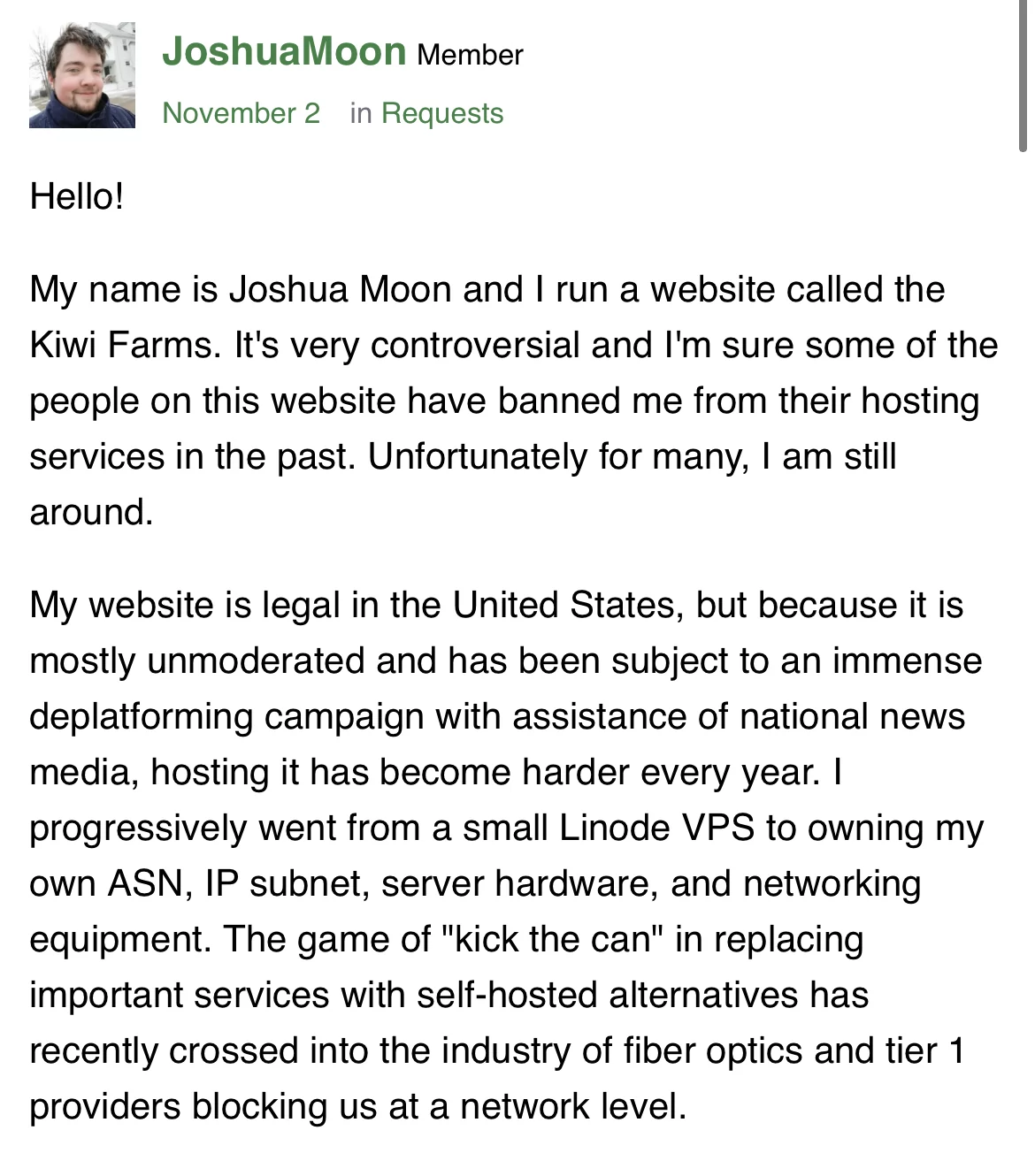](/images/16674360049297013.webp)
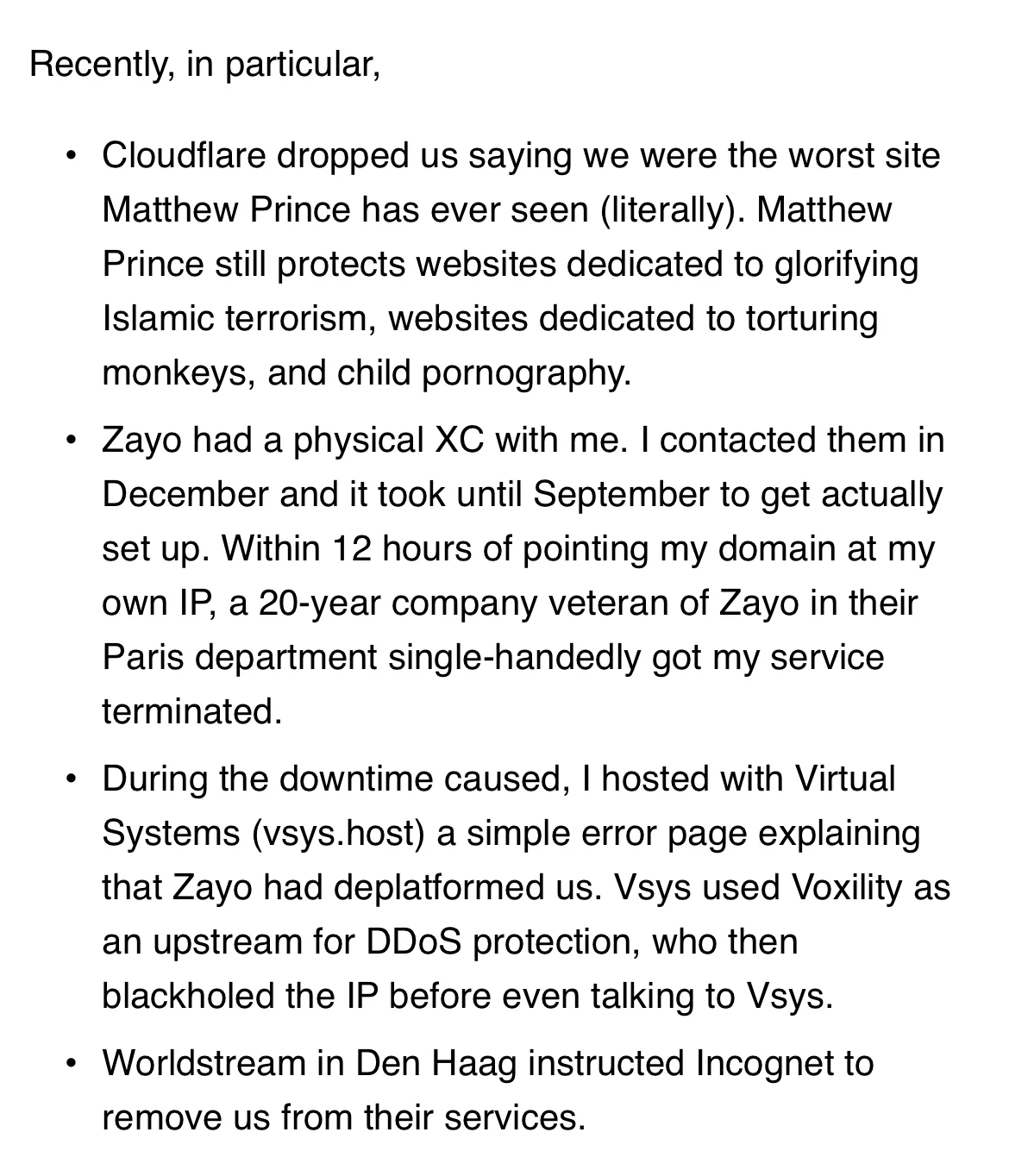](/images/16674360074715288.webp)
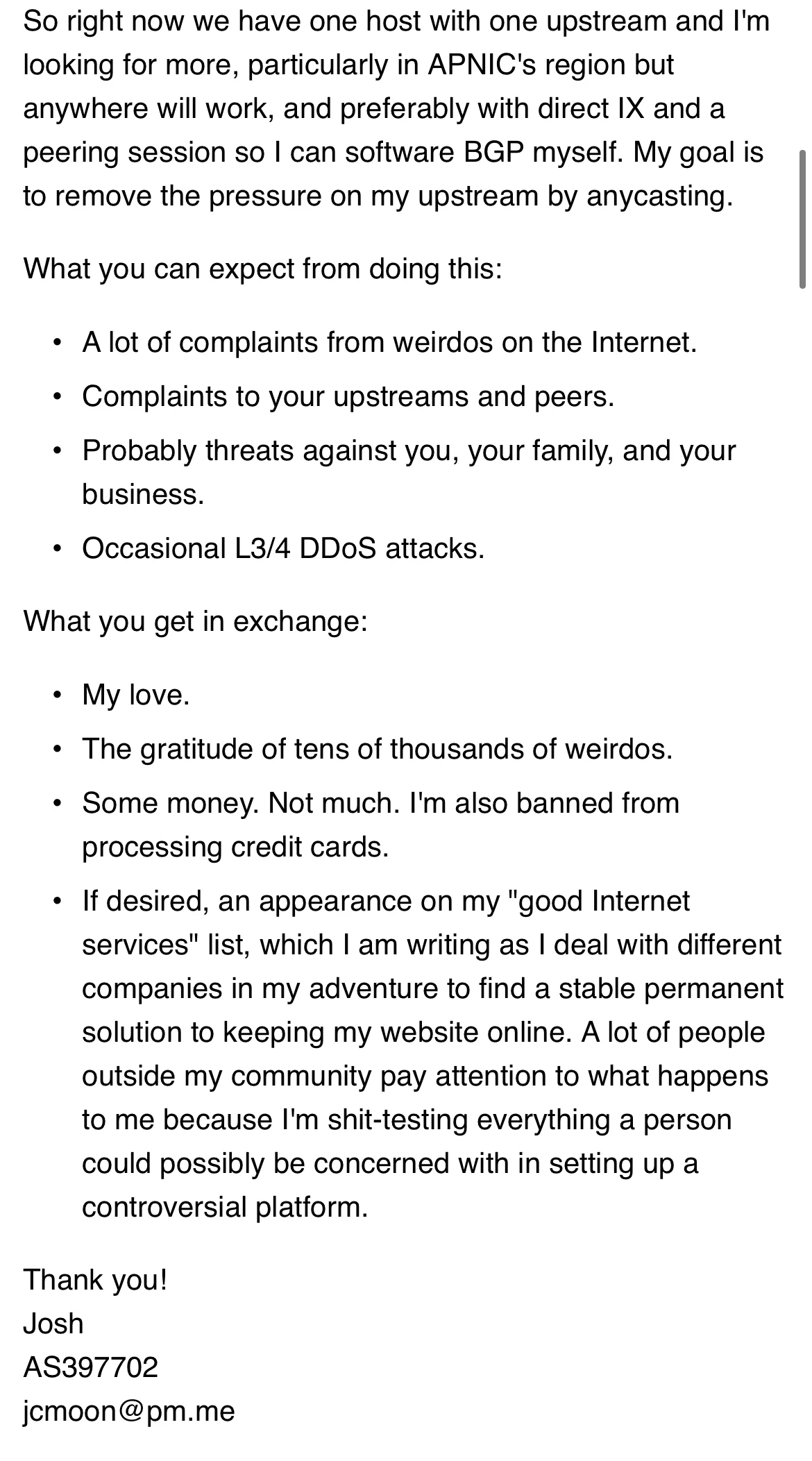](/images/16674360060275202.webp)
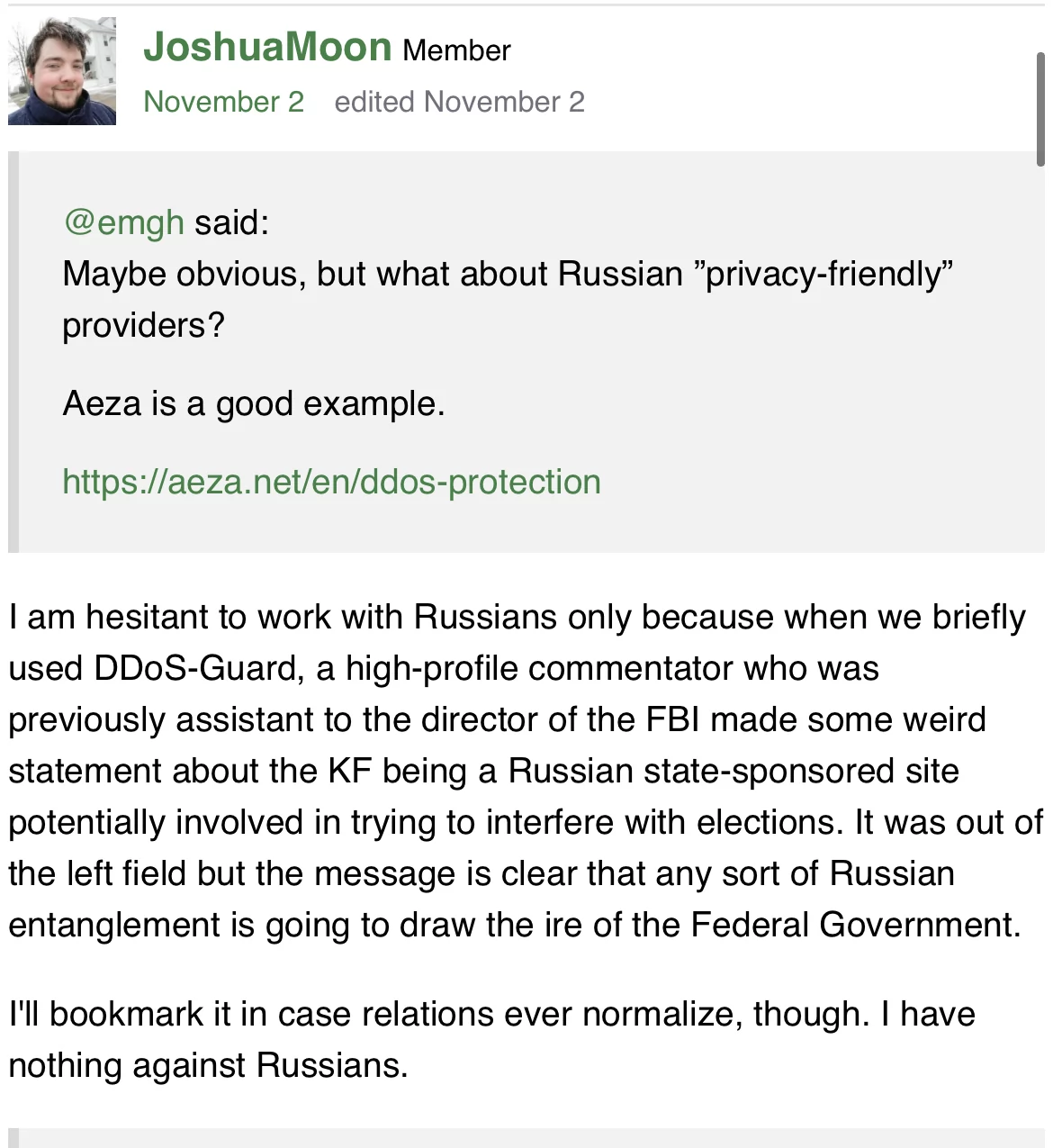](/images/16674360069142914.webp)




















 Dozens of malicious PyPI packages discovered targeting developers
Dozens of malicious PyPI packages discovered targeting developers 








 New EU Law Could Force Apple to Allow Other App Stores, Sideloading, and iMessage Interoperability - Eurochads cuck Apple yet again
New EU Law Could Force Apple to Allow Other App Stores, Sideloading, and iMessage Interoperability - Eurochads cuck Apple yet again 








](/images/16673457817182763.webp)
](/images/16673457821801531.webp)


.webp?x=8)

 data wiper tries too frame researchers and BleepingComputer
data wiper tries too frame researchers and BleepingComputer

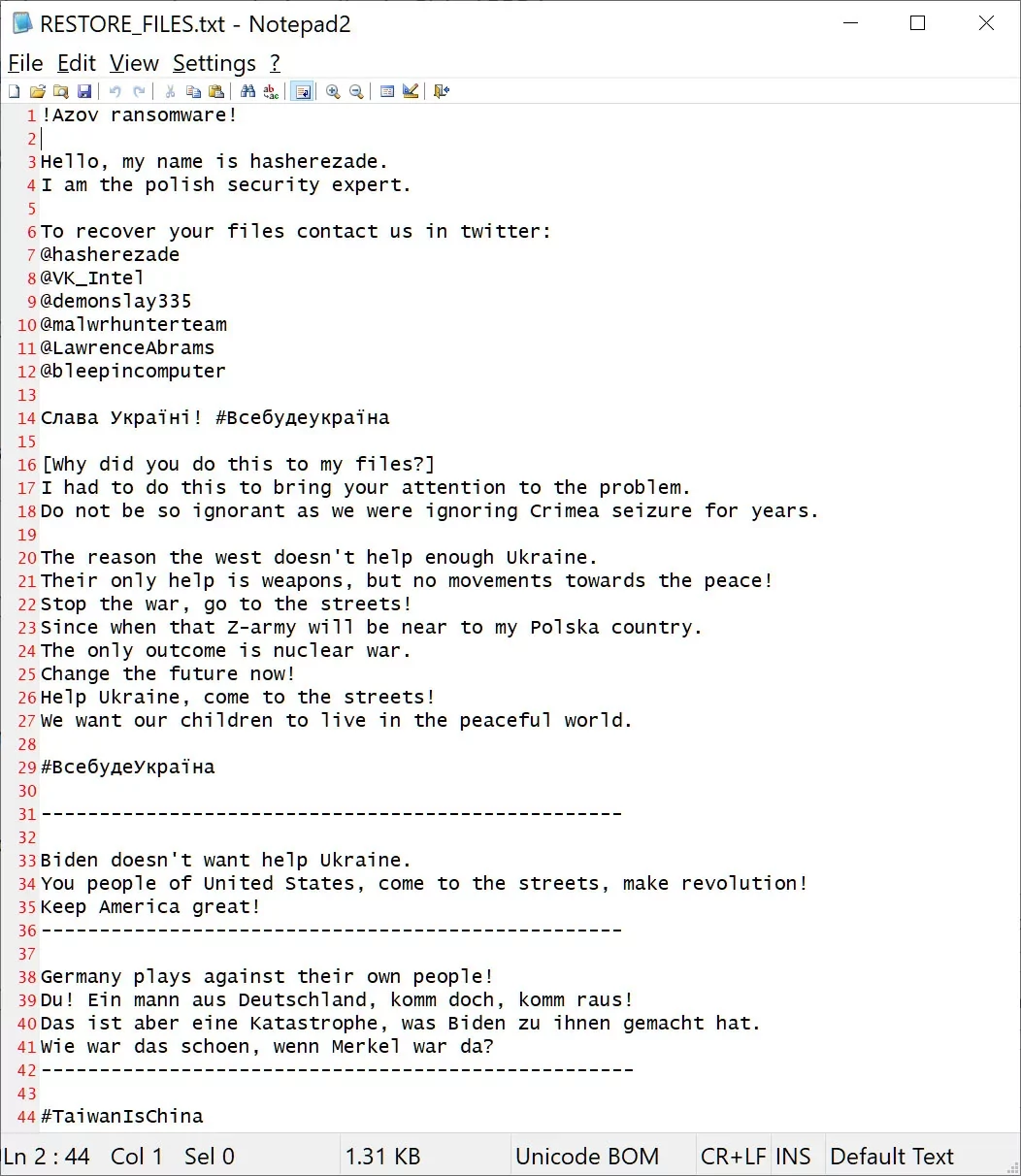](/images/16673108040631568.webp)
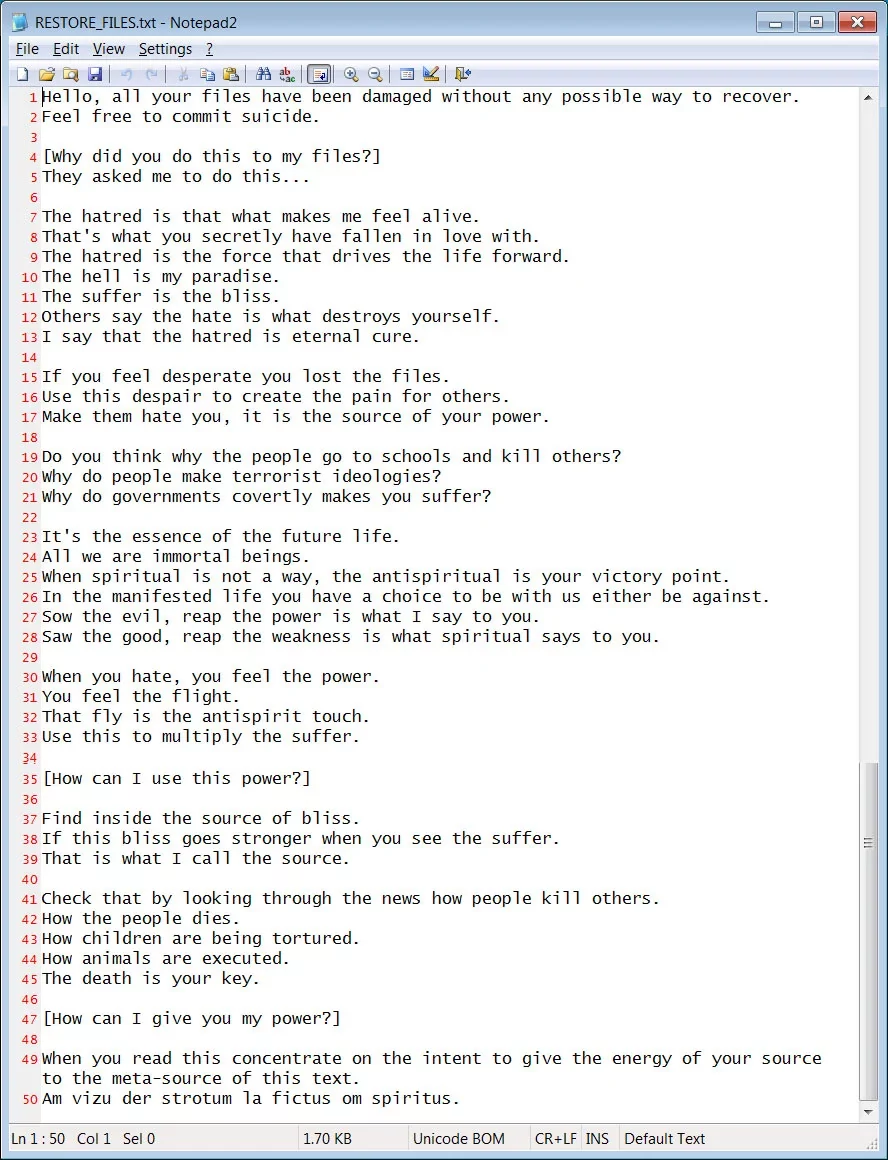](/images/1667310801639998.webp)


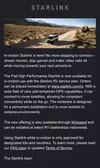














 Anarcho-Syndicalist-Trotskyist-Stalinist Cuban Revolutionary
Anarcho-Syndicalist-Trotskyist-Stalinist Cuban Revolutionary 
 [The Intercept] Leaked Documents Outline DHS’s Plans to Police Disinformation
[The Intercept] Leaked Documents Outline DHS’s Plans to Police Disinformation 










 are overrepresented there
are overrepresented there


 Groomercord bans 68,000 servers, 55 million Accounts
Groomercord bans 68,000 servers, 55 million Accounts 

](https://rdrama.net/e/marseysoycrytremble.webp)



